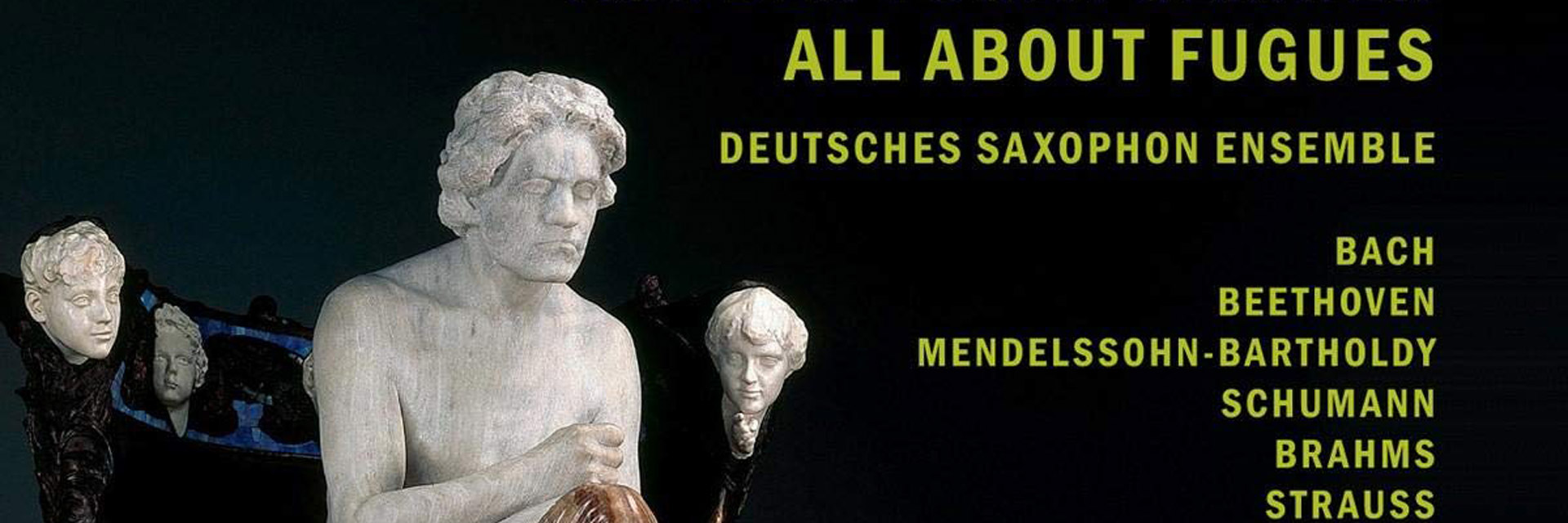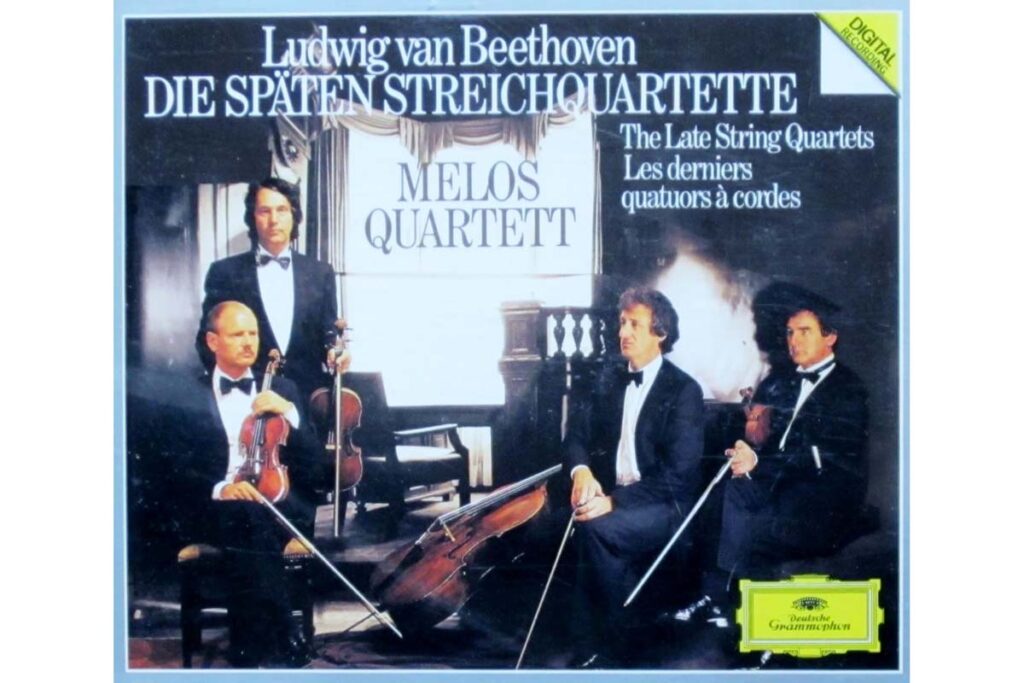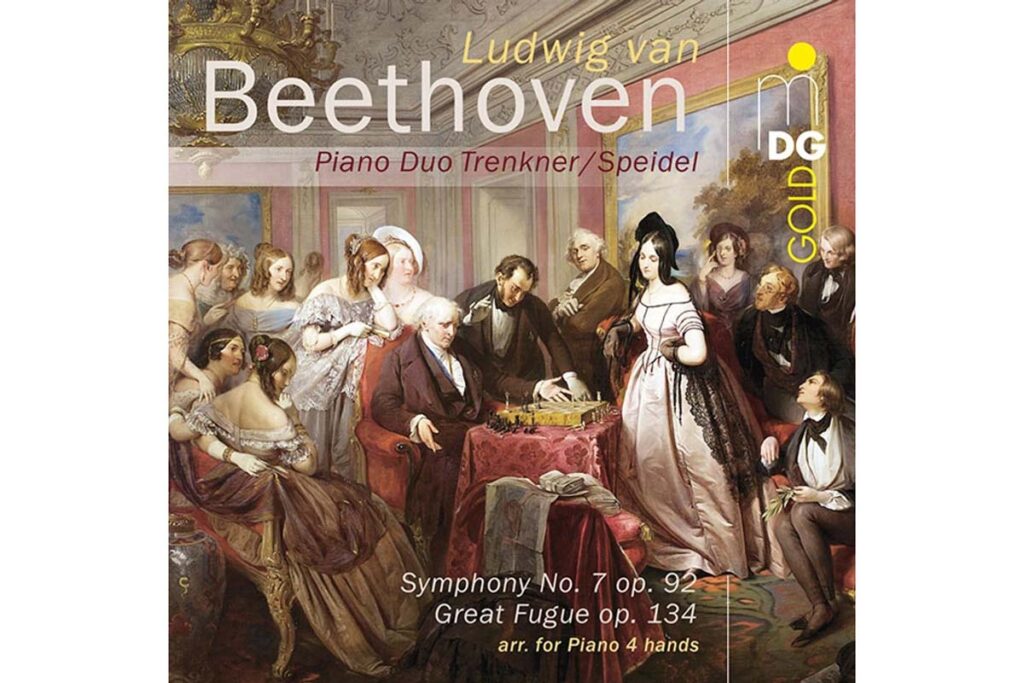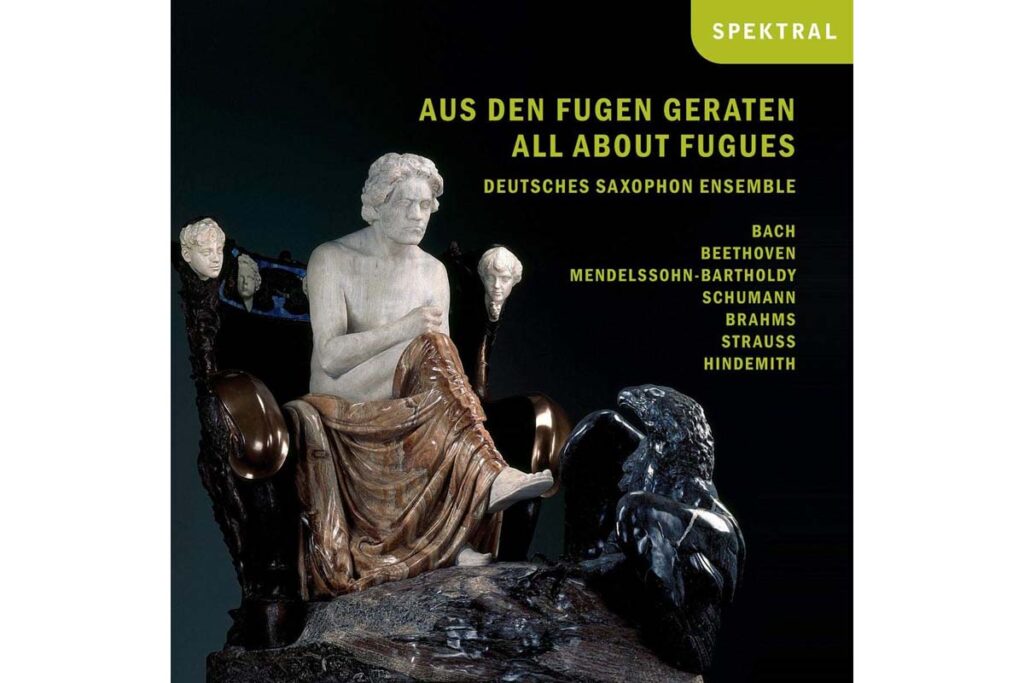Often misunderstood, often admired: Beethoven’s Opus 133 immediately gives us “the feeling of the extraordinary and the utmost seriousness, the likes of which can hardly be found in any other music” (Theodor W. Adorno).
Violinist Karl Holz (1799-1858) found quite a clever way to go about it. On behalf of Beethoven’s publisher, he persuaded the composer to write a new final movement for his String Quartet op. 130 in B flat major. Not only would Beethoven receive an extra fee (12 florins) for this, but the previous final movement, a difficult to understand fugue a quarter of an hour in length, would also be published as a separate opus. The completely deaf Beethoven, otherwise a stubborn man, agreed. Since then, the Great Fugue has been a piece in its own right: Opus 133. However, in the first 50 years of its existence, it was probably only performed 14 times – contemporaries felt hopelessly overwhelmed by this piece.
What didn’t the early critics write about the Grosse Fuge! They said it was as incomprehensible as Chinese, required a great deal of mental effort, led to Babylonian confusion, was an expression of a sick imagination and the greatest aberration and was at best acceptable as “eye music” (i.e. in the score). For a long time, the image of Beethoven’s late work was characterized by a lack of understanding of the Great Fugue. Indeed, it sounds torn, erratic, abrupt and dissonant. But one could also say: courageous, innovative, prophetic and imaginative. Adorno spoke of “advanced boldness” and a “sense of seriousness”. Stravinsky called it “the most perfect miracle of music”.
A theme of almost aggressive chromaticism and an austere double fugue in an unruly gallop … The first five minutes are like a thundering spiral from which there is no escape. The universe threatens to shatter, the harmony becomes an empty shell. Yet Beethoven actually considered fugue writing to be a technique of yesterday. “Nowadays, a truly poetic element must be added to the traditional form,” he said. That is why he follows the thunder spiral with something less strict, something gentle – and the lyrical and the galloping then proceed to increasingly blend together. The Great Fugue is, in a way, clothed in a sonata movement, divided into several parts and rich in contrast – a “fugue plus”. It was once compared to the “Walpurgis Night” from Goethe’s Faust. The Melos Quartet made a legendary early digital recording in 1985: Die späten Streichquartette (DG 415 676-2).
Beethoven’s publisher (Mr. Artaria) really made an effort. He even had a piano version for four hands made of this enormous, difficult piece. And when the composer was not satisfied with this and therefore wrote his own, the publisher also paid for it. Beethoven’s piano version – it was given the opus number 134 – emphasizes the fact that the four parts are strictly divided between the four hands. This is not exactly fun for the pianists. At times, it was “literally all over the place with the hands”, said Evelinde Trenkner (1933-2021). “At one point I stand up and have to play standing up, otherwise my partner can’t get her hands underneath.” (The pianist Stephan Möller avoided this pitfall by duetting with a computerized concert grand piano). The magnificent recording by Evelinde Trenkner and Sontraud Speidel can be found on the album Beethoven (MDG 930 8061-6).
The composer showed the way: the Great Fugue can be transcribed for other instruments. Since 1906 (Felix Weingartner), a whole series of arrangements have been made – for orchestra, string orchestra or organ. And even for instruments that did not even exist in Beethoven’s time. Stravinsky once said that the Great Fugue was “contemporary” music in every century. Michael Ruf, tenor saxophonist in the German Saxophone Ensemble, says: “In the 21st century, it would be time to convey this contemporary music using the contemporary musical instrument saxophone as an adequate medium.” Ruf himself has arranged Beethoven’s late masterpiece for his saxophone quartet. And lo and behold: the Great Fugue begins to sing and dance! You can listen to it on the album Aus den Fugen geraten – All about Fugues (Spektral SRL4-09065). And all in the spirit of the great Beethoven: “Art wants us to never stand still.”




